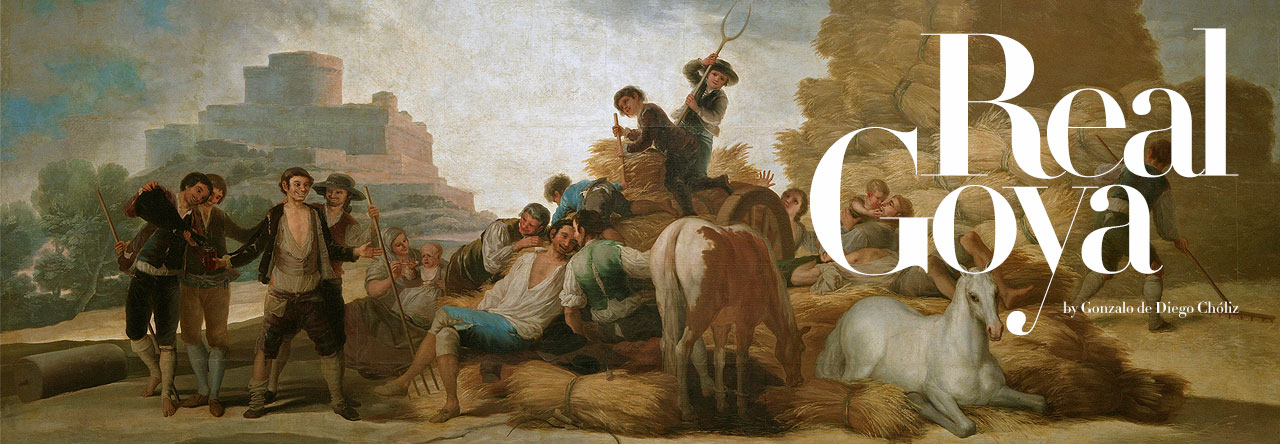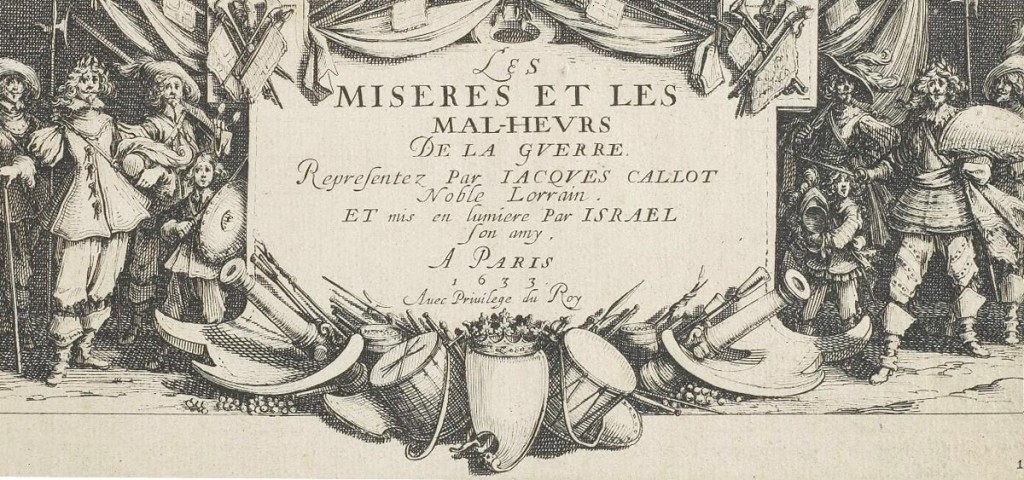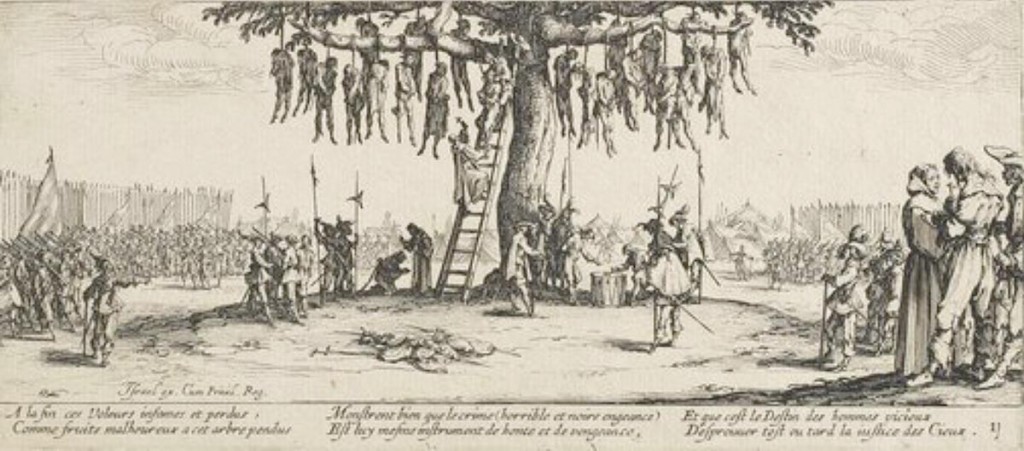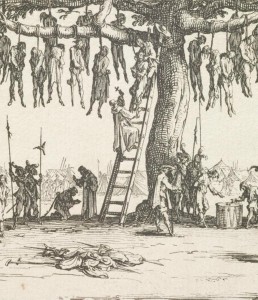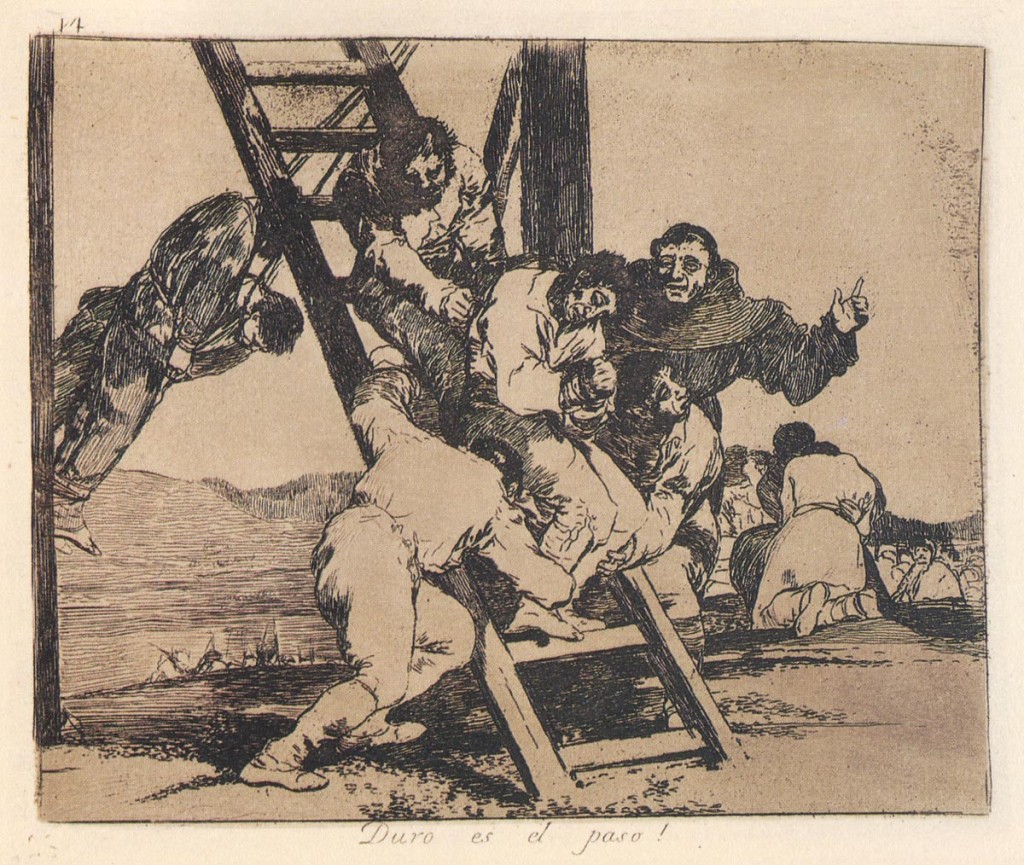Jacques Callot, was born in 1592 in Nancy, France, and died in the same city on 24th or 25th of March 1635, is one of the great engravers of the history but today is virtually unknown to the general public. His contributions as much in technics than in subjets, were more than remarkable and so he is considered nowdays, having influence over the engraving evolution and the conception of the topics to deal with, and at the same time with his very personal way of focusing on all the matters.
Callot is one of the most important etchers of all time, and it is known that he produced more than 1500 prints. Very young, at age 12 and led by an irresistible ambition to become a great artist, he moved to Rome and Florence, the city where he made a long series of etchings that it supposes the true representation of the Commedia dell’arte . With a very personal revolutionary technique and aesthetics, he depicts life scenes with honesty and accuracy. He creates school “in the style of Callot” and joings the short list of the greatest engravers in the History of Art.
[/one_half_last]
In 1614 he took in to service of Cosimo II’s de Medici and he creates, among others, their Caprici di varie gigantic figure and Impunetta della Fair, one of the masterpieces of engraving. He makes everything and has enormous succes at all levels.
In 1621, after Cosimo II’s death, he returned to Nancy, capital of the Duchy of Lorraine, where in 1637 he made his masterpiece, The Miseries and Misfortunes of War , inspired at least in part in the extermination of the people, desolation and ruin after the invasion of Lorraine ordered by Richelieu. This is a terrible representation of the atrocities carried out during the Thirty Years War, perfectly comparable in quality with the Disasters of War by Goya, whom certainly inspire both the Caprichos, as the Disasters of War already mentioned.
Grabado número 11 de la serie de 18, titulado The hanging (El ahorcamiento)
The end of his career will be very fruitful equally remarkable, highlighting its famous Temptation of St. Anthony made shortly before his death in March 1635.
Moreover Jacques Callot was indeed the first artist in the history of art, that instead of glorifying the courage, the force, the heroic death and the war, prefers to express the horror and the war misery and it will have to wait two centuries until Goya re-took the war as a subjet, under the same point of view, considering the poor and disinherited as the genuine heroes of the history.
We show, with an illustration, one of the scenes of his The Miseries and Misfortunes of War (*), the engraver number 11 and a detail of the sameone, in which we can notice similariries worth to be mentioned in the Goya’s disaster nomber 14 Duro es el paso (Hard is the way!) in which Goya, like Callot, represents very pathetic the simultaneity of the death and the figure of a priest, who tries to comfort spiritually one of the condemned.
GdD
